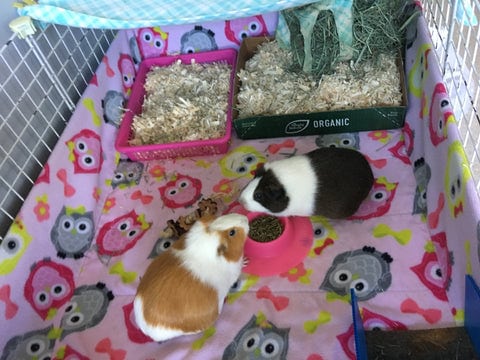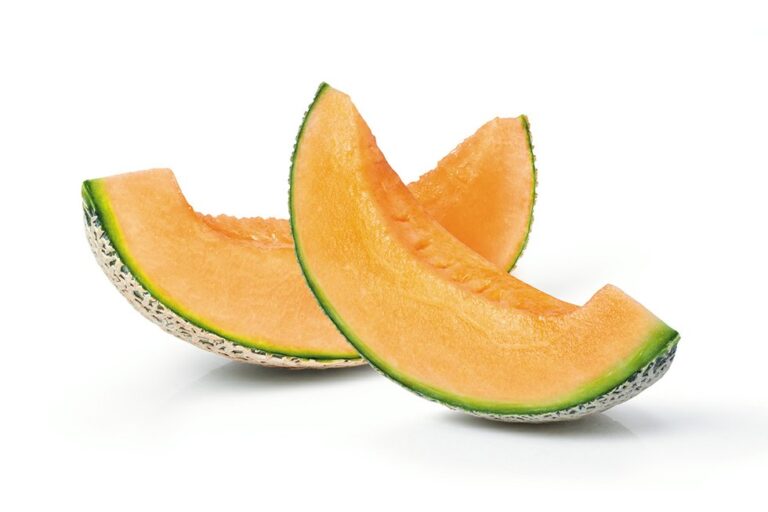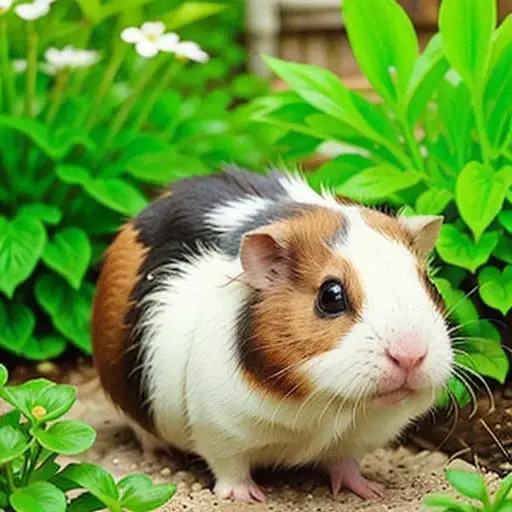Puppy Pads vs. Traditional Bedding for Guinea Pig Cages
Guinea pigs are adorable, friendly creatures that can make a great addition to any family. If you’re a proud owner of a guinea pig, you know how important the right bedding is to keep your piggy comfortable and healthy. But with so many options on the market, how do you decide what’s best for your pet? In this article, we’ll explore the pros and cons of using puppy pads vs. traditional bedding for guinea pig cages.
What are puppy pads and how can they be used for guinea pig cages?
Puppy pads are absorbent, disposable pads designed to soak up your guinea pig’s messes in their cage. They can be a convenient option for many pet owners, especially those who don’t have a lot of time to clean their guinea pig’s cage every day.
Types of puppy pads
There are various types of puppy pee pads for guinea pigs available in the market. Some pads are made with a plastic bottom layer while others are made with a more environmentally friendly, biodegradable material. Some pads also have a scent or attractant that encourages your guinea pig to use them for peeing.
Puppy pads safe for guinea pigs
It is important to use puppy pads that are safe for guinea pigs. The pads should be unscented and made of materials that are non-toxic and non-irritating to your guinea pig’s skin. Some guinea pigs may have sensitive skin, so it is essential to choose pads that will not cause any allergic reaction.
How to change pee pads for guinea pigs
It’s essential to change the puppy pads frequently to keep your guinea pig’s cage clean and odor-free. You can start by removing any visible dirt or feces from the cage using a scooper or dustpan and brush. Then, remove the soiled pad from underneath the cage liner and dispose of it in the trash. Avoid flushing the puppy pads down the toilet, as they can clog the pipes. Finally, replace the pad with a new one, making sure that it is placed smoothly underneath the cage liner.
What are some alternatives to puppy pads for guinea pig bedding?
While puppy pads can be a convenient option, they are not the only bedding available for guinea pigs. Here are some alternatives to consider:
Disposable vs. washable options
If you don’t want to use traditional bedding like straw or wood shavings, you can choose between disposable or washable options. Washable pee pads for guinea pigs are a popular choice among pet owners. They can be washed in the washing machine and reused several times. Disposable pads are convenient for those who don’t have time to wash the pads continuously.
Using fleece as bedding
Fleece is another popular option for guinea pig bedding. It’s an absorbent and soft material that can be used over and over again after washing machine. It is a cost-effective, safe, and natural option for guinea pig bedding.
Cage liners as an option
Cage liners are also a great alternative to puppy pads or traditional bedding. They are reusable and easy to clean. You lay a liner in the piggy’s cage, and your guinea pig can pee on it. Once it dirty, it can be taken out, washed in the washing machine, and put back in the cage again. It’s a great option for a fuss-free bedding.
Can puppies pads be harmful to guinea pigs?
While puppy pads can be a convenient option for guinea pig owners, they can also pose some risks if not used correctly. Here are some potential dangers to consider:
Potential dangers of chewed up puppy pads
If your guinea pig chews on a used puppy pad, it can cause some health problems. Some puppy pads contain a chemical called sodium polyacrylate that can expand up to 300 times the original size and cause blockages in your guinea pig’s digestive tract.
Safe to use puppy pads for guinea pigs?
Yes, puppy pads are safe to use for guinea pigs when used correctly. As mentioned earlier, it’s important to choose pads that are unscented and made from non-toxic materials.
Nibbling and swallowing of puppy pads by guinea pigs
Some guinea pigs have a habit of nibbling on everything they come across. So, if your guinea pig nibbles on a used puppy pad, it can lead to intestinal blockages, which will require surgery to fix. It’s essential to keep an eye on your furry friend and ensure that they don’t chew up any puppy pads.
Are puppy pads more cost-effective than traditional bedding for guinea pig cages?
The cost of guinea pig bedding can add up quickly. But are puppy pads more cost-effective than traditional bedding? Let’s find out.
Comparing the cost of puppy pads vs. traditional guinea pig bedding in the long run
Puppy pads can be more expensive in the long run than traditional bedding like straw or wood shavings. You need to replace the pads often, so the costs can add up. Traditional bedding requires less frequent changing, which can result in long-term savings.
The environmental impact of using disposable puppy pads
Disposable puppy pads can have a tremendous environmental impact as they cannot be recycled. They are not biodegradable, which means they will sit in landfills for years. This is bad news for our planet. Choosing washable options or traditional bedding can help reduce your environmental footprint.
Is it worth investing in washable options over disposable puppy pads?
Washable options like fleece and cage liners can be a cost-effective and environmentally-friendly option for guinea pig bedding. While the initial investment may be higher, as these materials can be reused multiple times, they may save you money in the long run.
How to properly use puppy pads for guinea pig cages?
If you decide to use puppy pads for your guinea pig’s cage, it’s essential to use them correctly to ensure that your pet stays clean and healthy. Here are some tips:
Ensuring proper placement of puppy pads in guinea pig cages
Place the puppy pads underneath the cage liner to prevent your guinea pig from directly coming into contact with them. This will help to keep your guinea pig away from the chemical in the pad material that might arouse an allergic reaction.
Frequency of changing puppy pads for guinea pig cages
It’s crucial to change the puppy pads regularly to keep your pet’s cage clean and odor-free. Changing the pad on a daily basis is recommended, while some guinea pig owners change pads two to three times per week, depending on their pet’s needs.
Tips on keeping guinea pig cages clean with puppy pads
Along with changing the puppy pads regularly, you should also spot-clean your guinea pig’s cage daily. Use a scooper or dustpan to pick up any visible dirt or feces. You can also wipe down the cage with a cloth or napkin to remove any debris that didn’t get picked up with the scooper.
In conclusion, both puppy pads and traditional bedding options have their pros and cons. It’s essential to consider your pet’s needs, your budget, and the environmental impact to choose the right option for you. With proper care and attention, your guinea pig will be happy and comfortable with whatever bedding option you choose for them.
“







